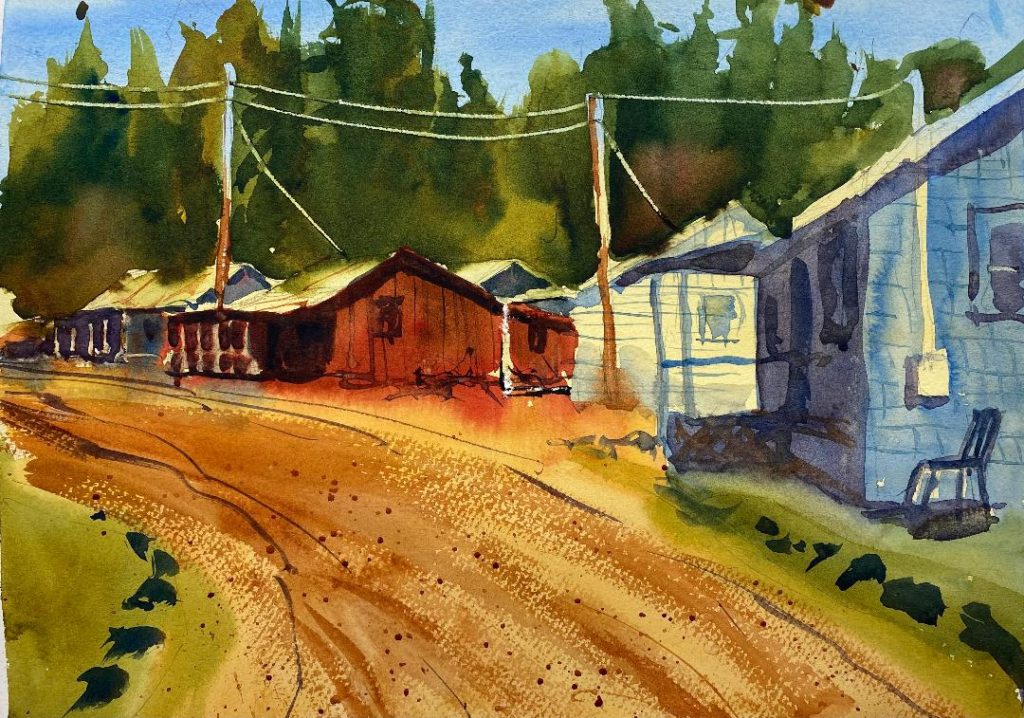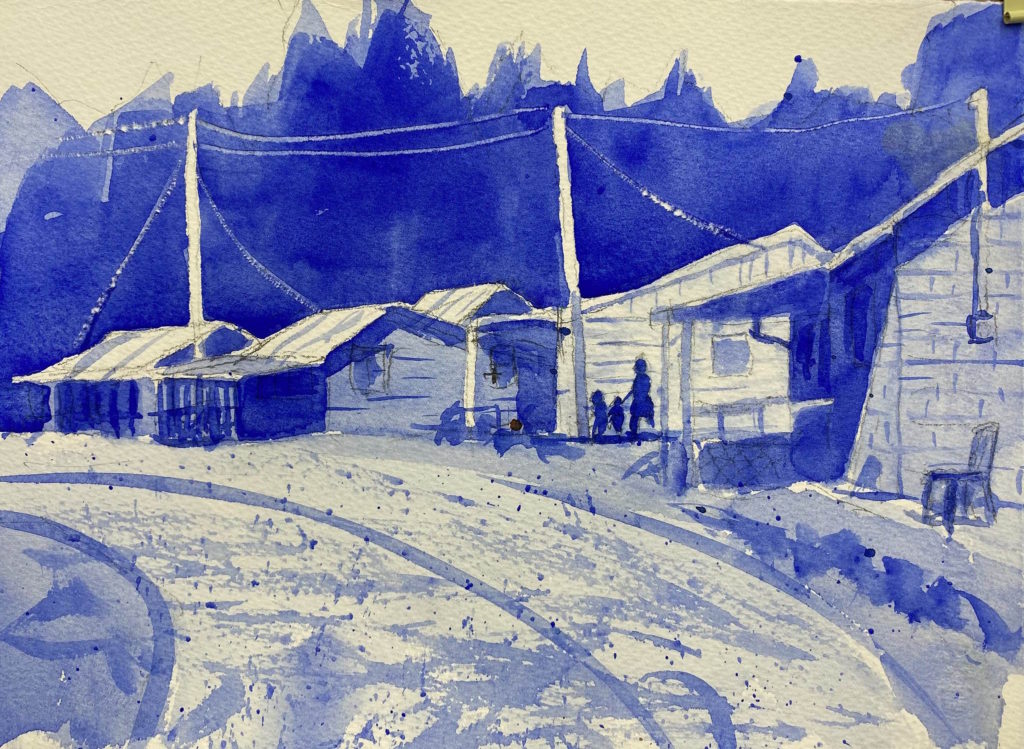As Katy and I drive to Hoodsport and back every Sunday, I always keep a watch for interesting art subjects. I especially like the odd clutch of shacks and sheds among the trees that you see in rural Washington. One Sunday near Shelton I spotted this cluster of small one-bedroom houses that I just had to paint. In my imagination they were built in the 1940s as housing for Shelton millworkers, or maybe they were tourist cabins that sprang up along Highway 101 in the 1930s.

My value sketch:

You do find interesting scenes! Nice work.
I’m always looking for something interesting. Who knows what will come around the bend?
I’m curious to know what you find yourself feeling, or thinking most about, as you paint these.
When I plan the painting and make my initial painting sketch, I’m doing lots of thinking (brain work) about the structure of the painting — values, shapes, etc. Then when I start painting, I put on some music and let the paint flow. I try to let it be as intuitive as I can. Although I have to admit that the other side of the brain keeps commenting on the progress: “Too dark”, wrong color,” etc. I like the painting part best.
I was asleep for about four hours and woke up thinking about this, just now–and went looking for my copy of Betty Edwards, 1979 edition, of Drawing on the Right Side of the Brain. I used that as a text for my Freshman Comp classes–all juniors and seniors who had put off that course until they could no longer put it off. They all dreaded writing, and all thought of themselves as terrible writers. I told them, “Don’t think of yourselves as writers. Think of yourself as ARTISTS.” On pages 11-13 in that book, she has “before” and “after” drawings made by her beginning art students. From that time on, I taught my English students both drawing and writing–and we used that book as one of our texts–and I , too, was a learner, right along with them.
That’s a very creative way to teach writing. I’ll bet your students loved it.
Man, that painting looks great even with the camera’s different interpretation of it.
Thanks, Guy. Yes, the camera always gives a slightly altered view of a painting. But hopefully it’s pretty close.